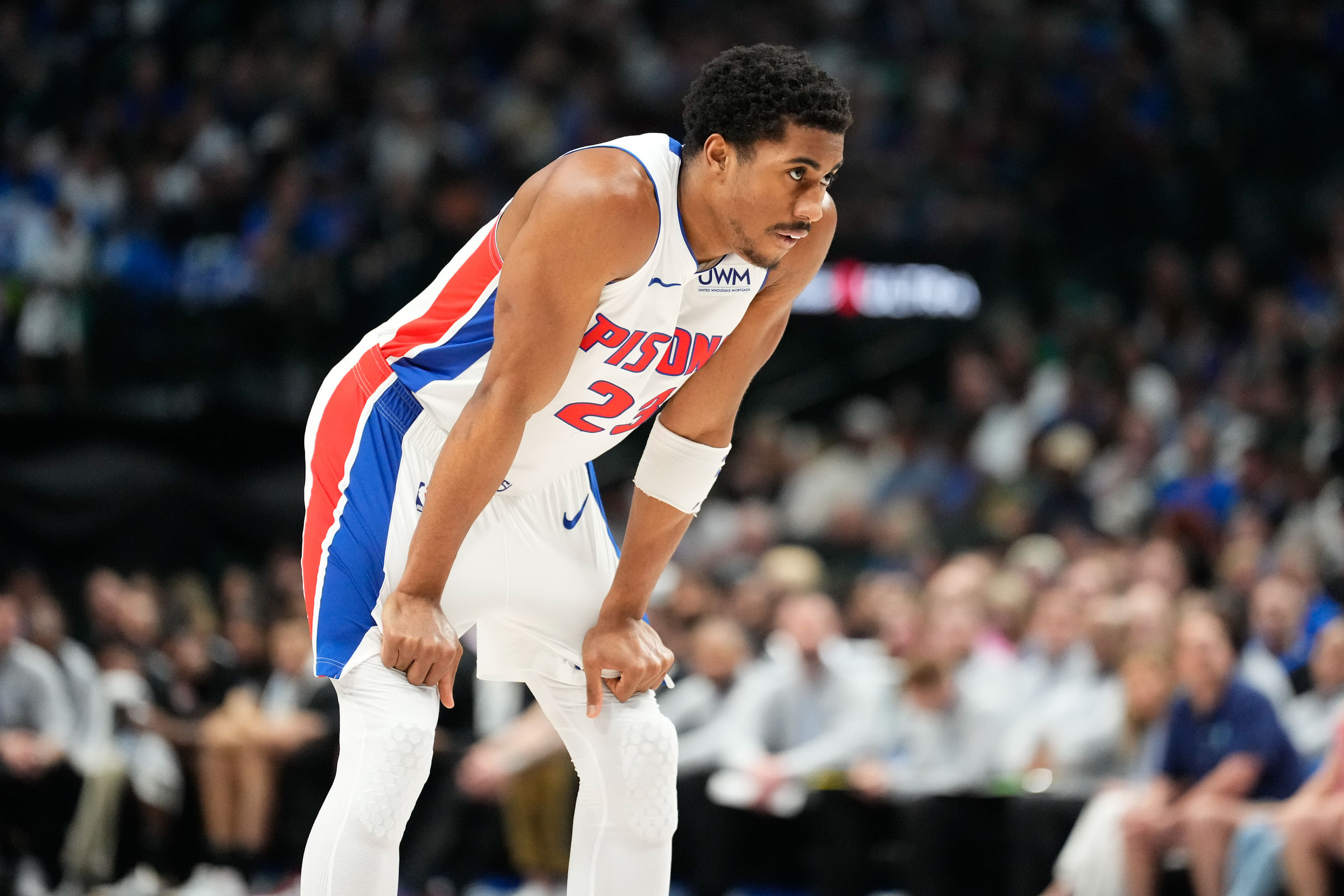Jaden Ivey Scouting Report: Dissecting how Pistons prospect can revive himself
It would be easy to think of Jaden Ivey’s first two NBA seasons as somewhat disappointing. The fifth overall pick in 2022 spent his inaugural NBA years on a dumpster fire of a Detroit Pistons team, where he’s seen his fair share of ups and downs.

Ivey’s counting stats across his first two years look nearly identical, even taking a slight dip in year two. Those splits — 15.4 points, 3.8 assists and 3.5 boards with a well below-average 53.6% true shooting — are solid for a second-year guard on a bad team, but nothing groundbreaking. For those who expected Ivey to develop into a star, it’s understandable to hope for more.
Jaden Ivey Scouting Report
Few NBA athletes can match Jaden Ivey’s pure power and explosion. He’s one of the league’s most potent rim pressure threats already, burning defenders all the way to the hoop. Advantage creation is critical for all guard prospects, and Ivey has that down, even if it’s inconsistent.
Explore the NBA Draft 2024 with our free NBA Mock Draft Simulator & be the GM of your favorite NBA team.
Beyond his excellent speed and burst, Ivey’s vertical pop and elasticity allow him to round defenders on the ground and in midair to create high-percentage looks.
Inside the arc, Jaden Ivey struggles to finish the looks he creates for himself efficiently. Ivey’s rim efficiency (57.1%) and mid-range efficiency (37.6%) placed in the bottom 25th percentile among all players last season.
He’ll often rush his footwork and toss up ill-advised shots at the rim, but at some point, the shots must fall. Given how many easy looks Ivey can create inside the three-point line, upping his efficiency there will be paramount. Most young guards, especially those with Ivey’s level of speed and explosion, must learn the art of slowing down.
That’s a notable problem for Ivey, as he often plays too fast for his own good, leaving efficient scoring and passing options on the table. In the moments when Ivey plays with pace, we see glimpses of a potential future star guard.
Jaden Ivey’s passing, similar to his driving with pace, has fluctuated throughout his young career. It’s clear Ivey has a competent vision to create off of a live dribble and operate pick and rolls with a baseline of competency.
Players with his level of advantage creation open massive passing windows, and Ivey can capitalize on those windows when he does slow down. When he’s sped up, Ivey’s decision-making wanes, and he’ll often miss passing windows in favor of tough shots or less optimal passes.
His shooting has been a topic of often fiery discussion despite being fairly pedestrian — 33.9% from deep on a solid eight attempts per 100 possessions. This past season, Ivey shot a strong 36.8% on 171 unguarded catch and shoot three-point attempts. Increased coaching and roster quality should lead to an uptick in his overall three-point efficiency.
Players with Jaden Ivey’s elite rim pressure ability don’t need to reach the nuclear shooter threshold. As long as Ivey can draw hard closeouts (which he likely will while shooting 35-36% on catch and shoot triples), he’ll thrive attacking off the catch.
To maximize his ceiling as a primary option, his efficiency as an off-dribble shooter must improve, especially against under coverages. Last season, Ivey shot a poor 33.7% on all off-dribble shots.
It’s difficult to evaluate any defender in a context as wretched as last year’s Detroit team, a bottom 5-6 defense throughout the season. Given the linked nature of defense compared to offense sometimes, good defenders struggle frequently to stand out in poor environments. We see elite defensive talents like Ausar Thompson shine in the same defense.
Jaden Ivey’s defense is still a major work in progress. That’s normal for 22-year-old guards, though Ivey isn’t at the level of offensive talent to completely wipe away his defensive faults. We’ll see flashes of Ivey’s athletic tools popping on the defensive end, where he’ll blow a play up off the ball or lock in at the point of attack for a possession or two.
Those are only flashes, though, as majority of Ivey’s defensive body of work doesn’t match the rare top-end moments. Screens flummox Ivey as he struggles to react and chase off the ball and lacks the strength and tight footwork to move over picks when he does see them. Ivey’s tools should allow him to play passable on-ball defense, though his jitteriness and sloppy footwork often fail him.
Jaden Ivey’s technique for defending other players and his awareness and processing off of the ball must improve to raise the baseline on defense. He’s not the fully untenable rookie he once was, but Ivey still has a ways to go before reaching positive or neutral defensive status. Guards often take time to mature on the defensive end, though, and Ivey has the tools to reach that with improved coaching and roster talent.
What needs to change for Jaden Ivey
Even on offense, Jaden Ivey’s entire package is laden with unknowns. It’s a massive “if” lit up in neon red and blue. There’s a world where Ivey continues to stagnate and finds himself on the end of NBA benches, scraping by as he looks for his next deal. It’s also possible that Ivey, with a real team around him, takes a substantial leap. The talent is there.
Everything gelling for Ivey may require a change of scenery. In theory, Ivey’s elite speed attacking off of the catch and solid spot-up shooting could make him an excellent backcourt partner for Cade Cunningham. He hasn’t been fully comfortable in that role yet, and if he cannot develop that comfort, Ivey’s ceiling might lie with another team.
Considering Ivey’s struggles throughout his first two seasons, his talent is worth betting on. Elite downhill athletes who pressure the hoop like Ivey tend to click eventually, even if it takes time. Marginal improvements to his efficiency from all over the floor and decision-making could turn Ivey into an excellent basketball player sooner rather than later.
Was this article helpful?
Thank You for feedback





